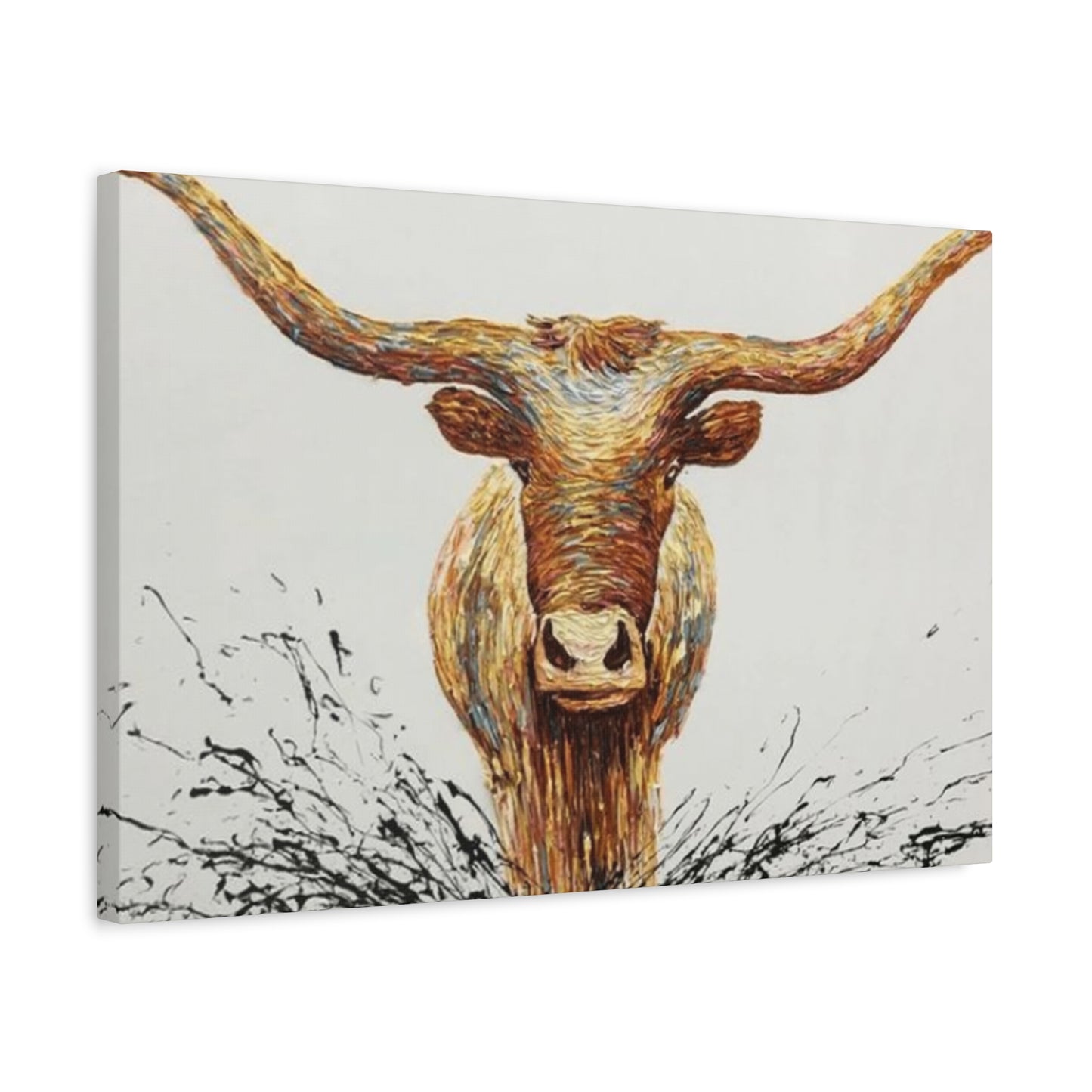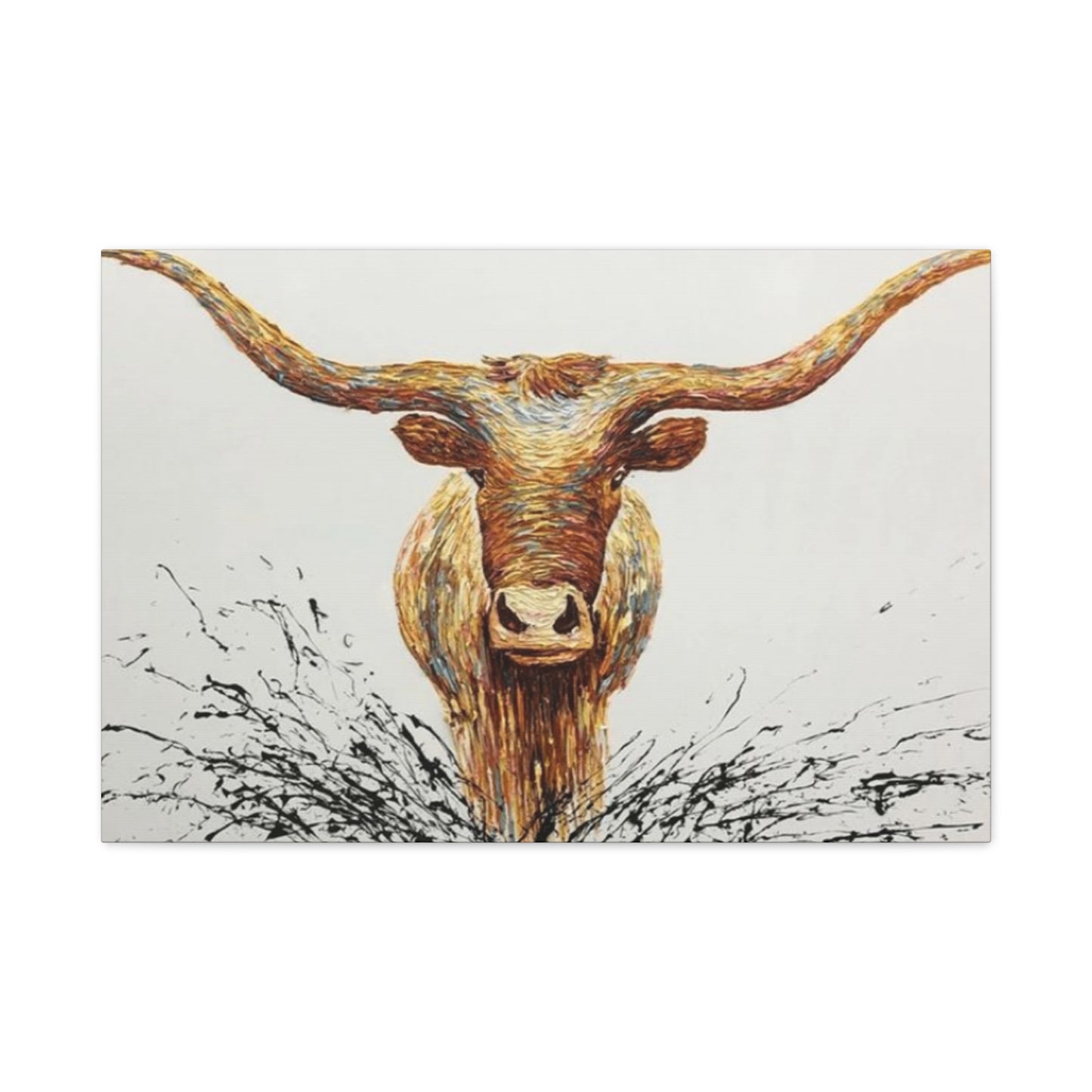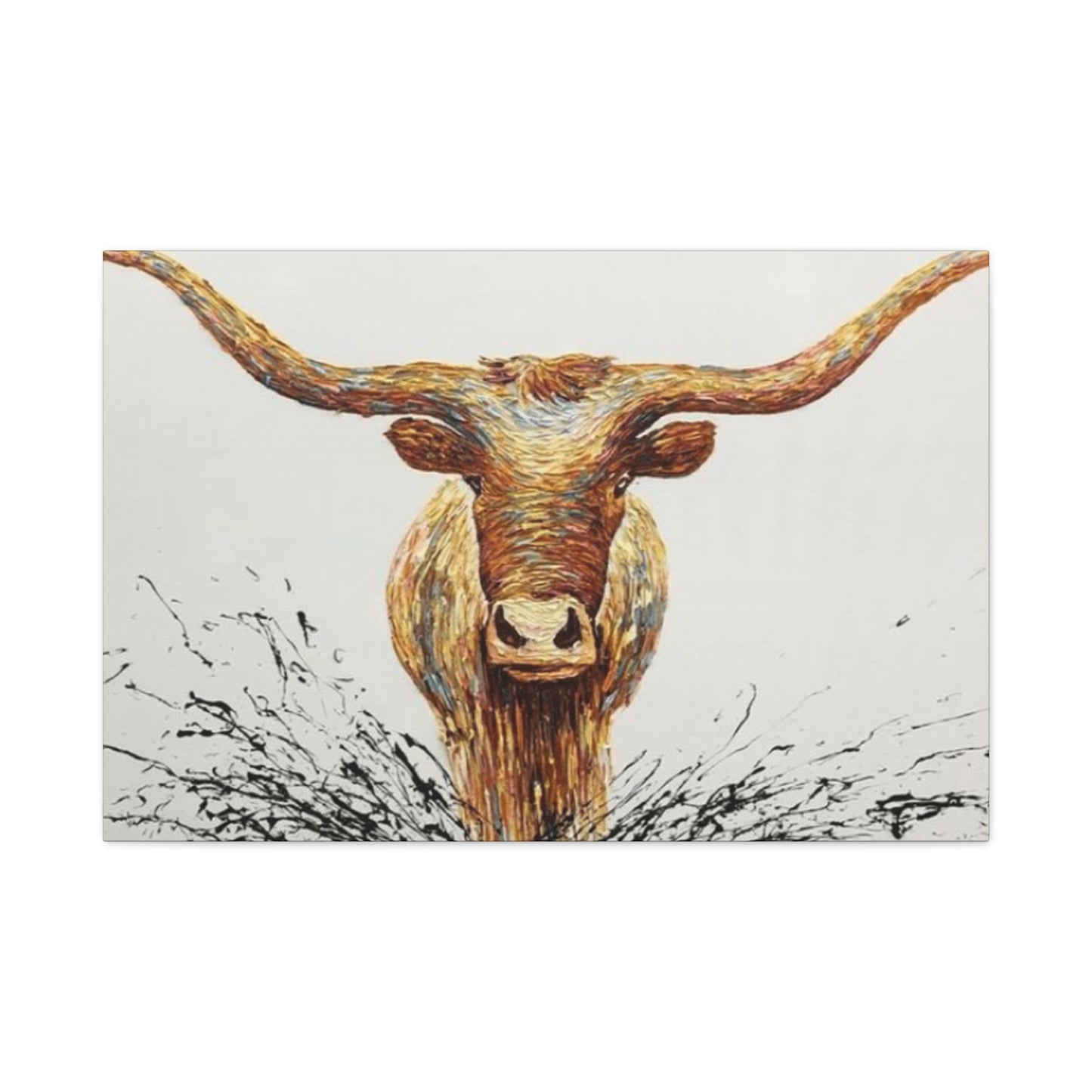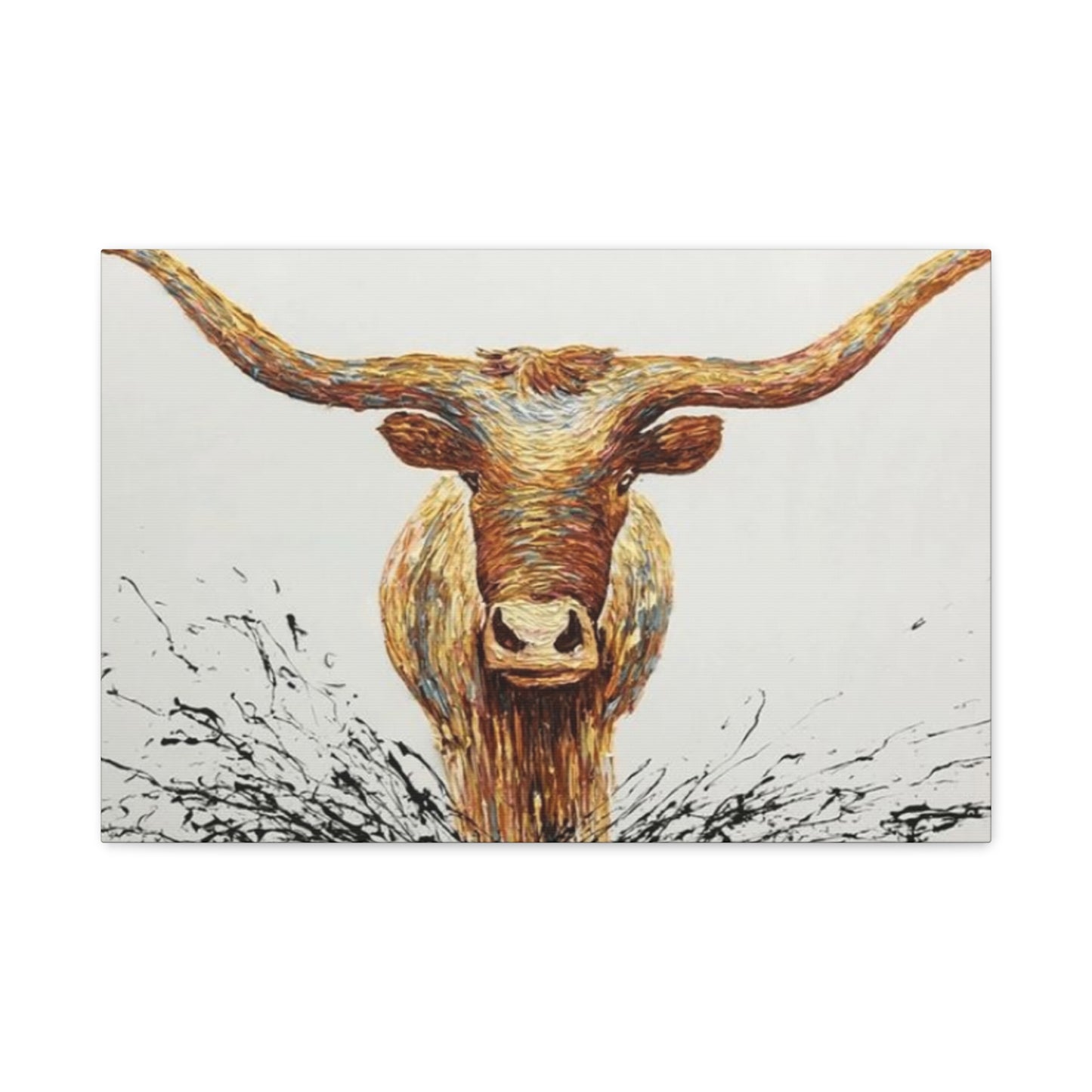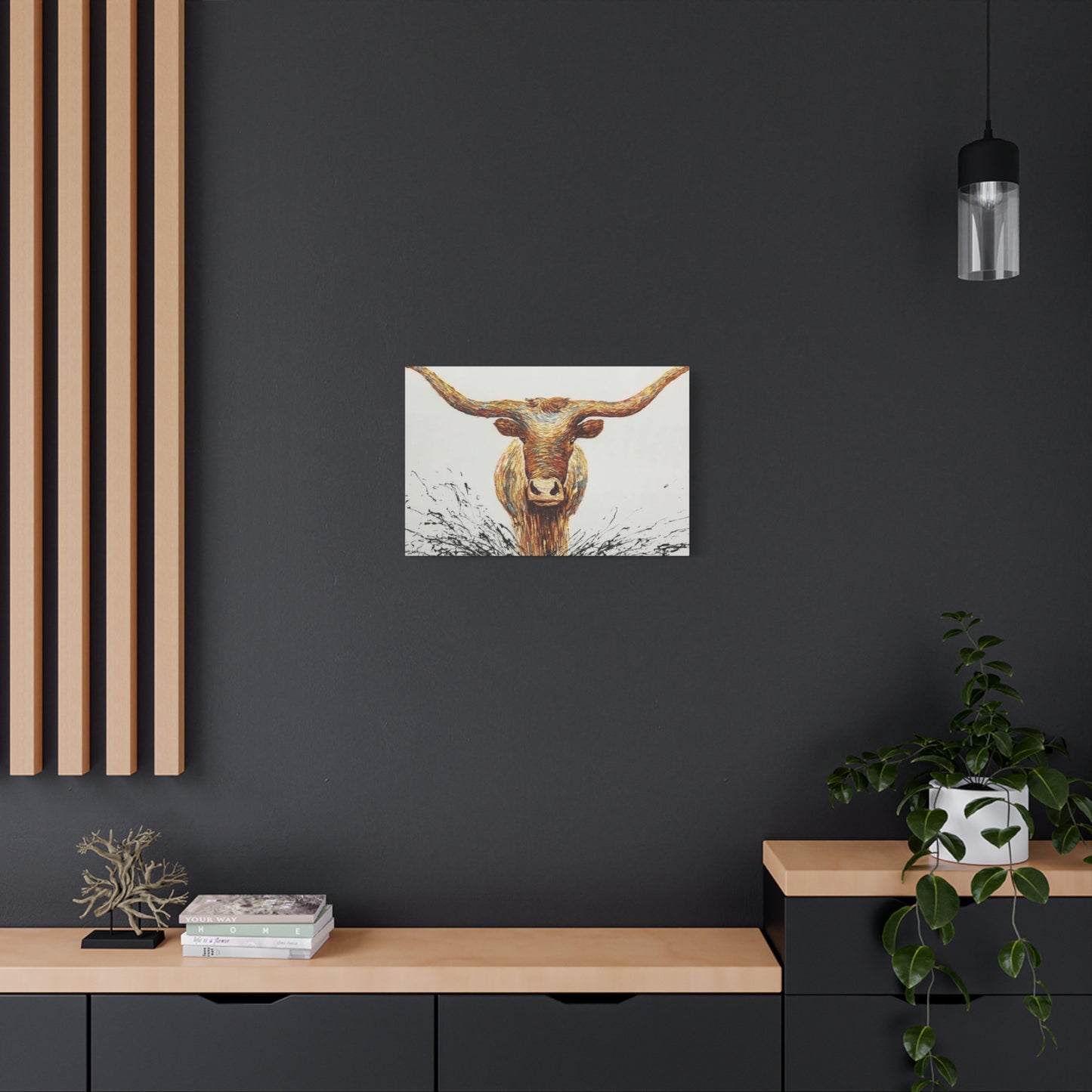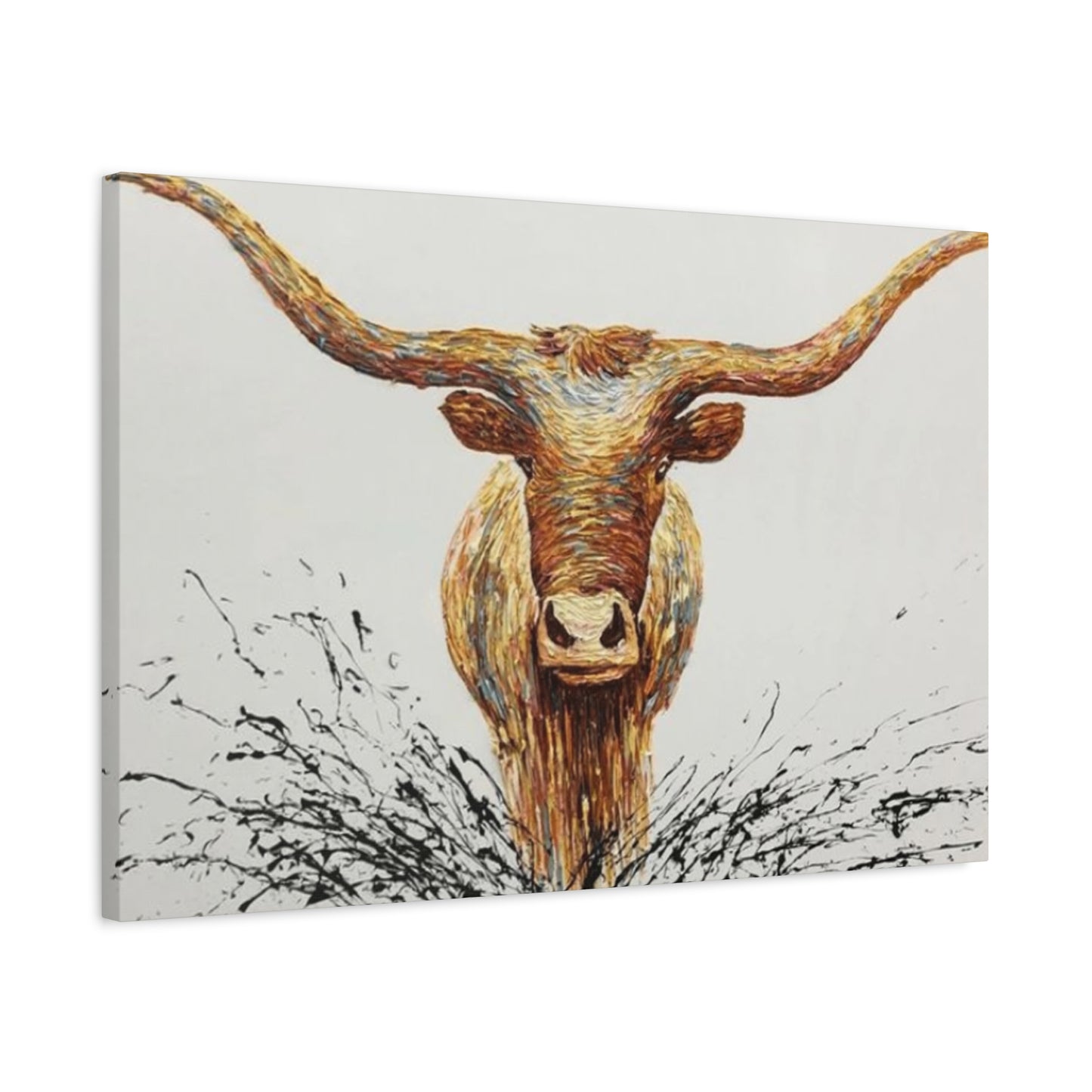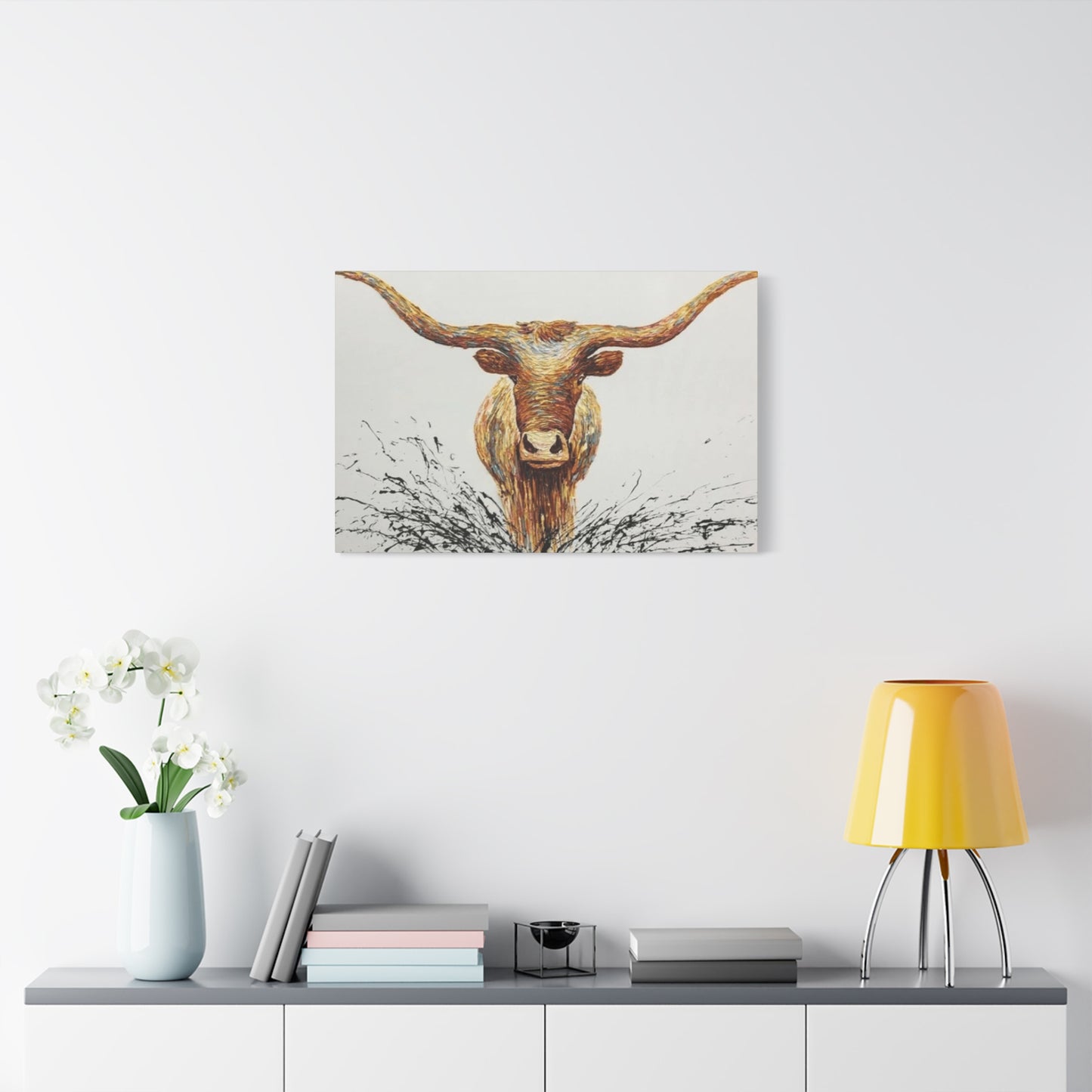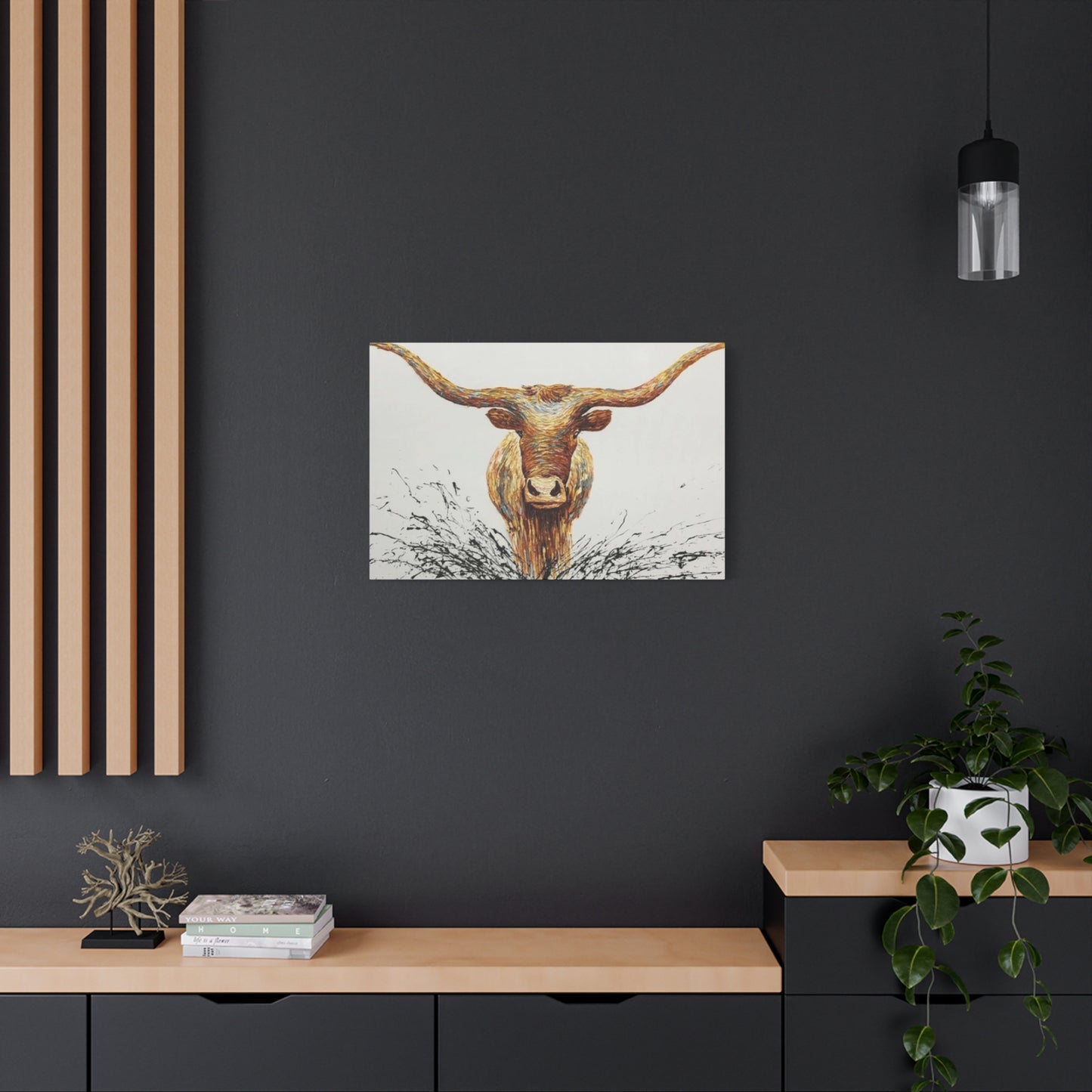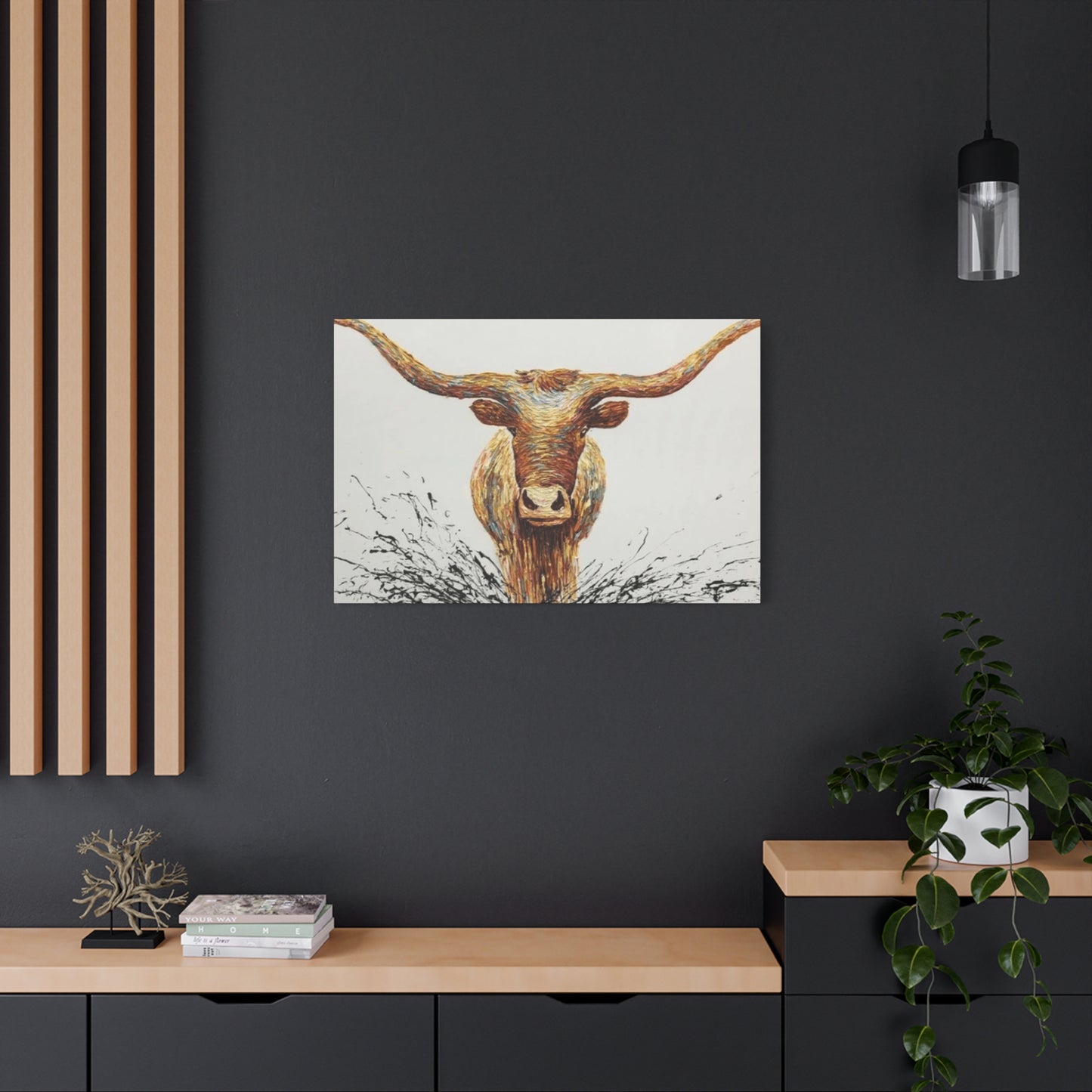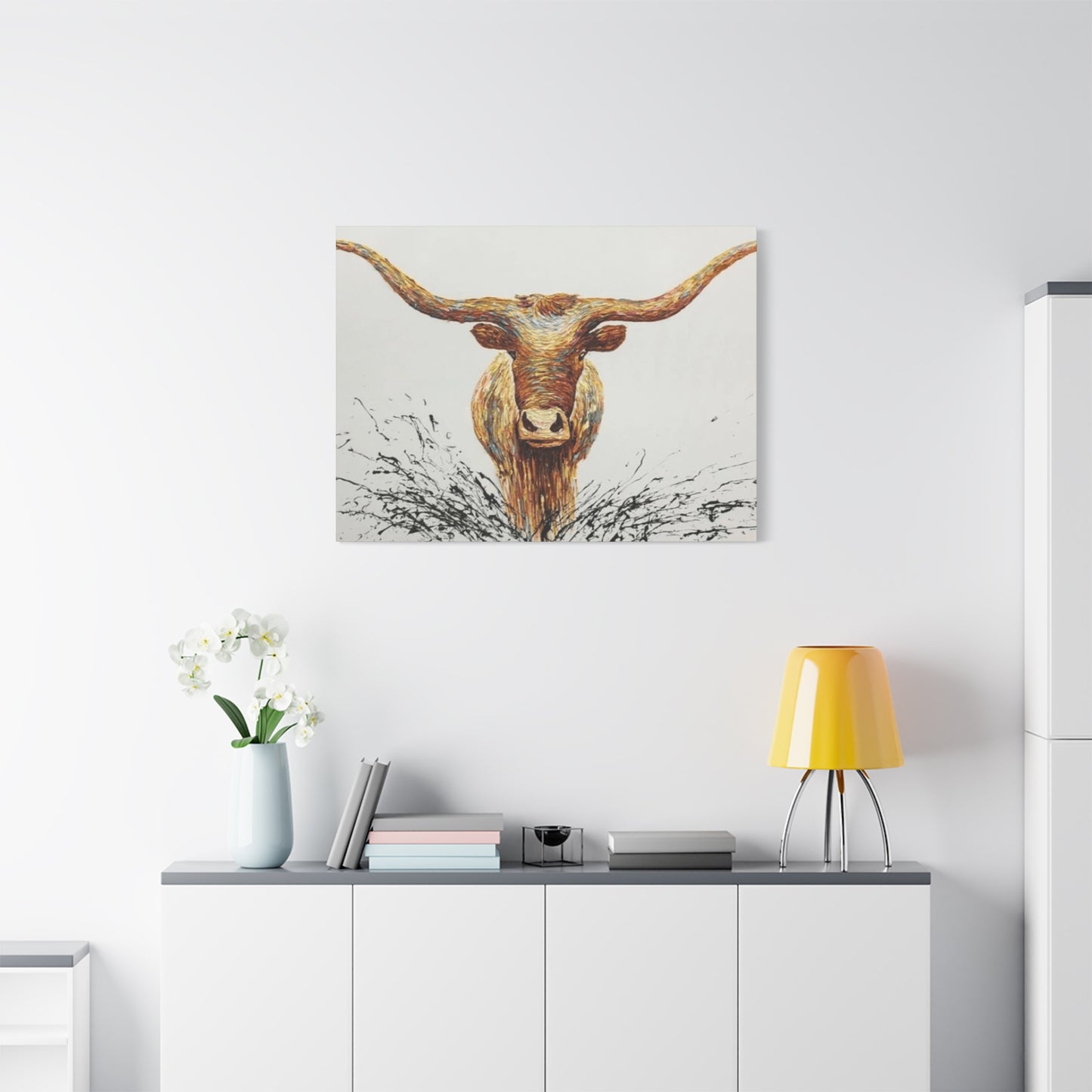Authentic Bull Longhorn Wall Art: Stunning Hand-Drawn Masterpieces
Bull longhorn drawings have emerged as one of the most captivating forms of wall art, bringing raw natural beauty and western heritage into contemporary living environments. These magnificent creatures, with their distinctive curved horns and powerful presence, translate beautifully into artistic representations that command attention and respect. The art of capturing longhorns through various drawing techniques has evolved significantly, offering homeowners an extensive range of options to incorporate these majestic animals into their decorative schemes.
The appeal of longhorn wall art extends far beyond its aesthetic value, representing strength, resilience, and connection to the American frontier heritage. Artists who specialize in longhorn drawings understand the intricate balance between capturing the animal's raw power and creating pieces that harmonize with modern living environments. Whether executed in charcoal, pencil, ink, or mixed media, these artworks serve as powerful focal points that can transform ordinary rooms into extraordinary showcases of artistic expression.
Contemporary longhorn drawings encompass various artistic styles, from photorealistic renderings that capture every detail of the animal's features to abstract interpretations that focus on the essence and energy of these magnificent creatures. The versatility of longhorn wall art makes it suitable for diverse decorative themes, ranging from traditional western motifs to ultra-modern minimalist approaches that emphasize clean lines and sophisticated simplicity.
Bull Longhorn Drawings in Wall Art
The foundation of exceptional longhorn wall art lies in the artist's ability to capture the essence of these remarkable animals through skilled draftsmanship and artistic vision. Bull longhorn drawings require a deep understanding of animal anatomy, proportions, and the unique characteristics that make each longhorn distinctive. Artists who excel in creating longhorn wall art often spend considerable time studying these animals, observing their behavior, movement patterns, and the subtle variations in horn shapes and body structures that make each individual unique.
Professional longhorn artists employ various drawing techniques to achieve different artistic effects and visual impacts. Traditional pencil drawings offer incredible detail and tonal range, allowing artists to create highly realistic representations that showcase the texture of the longhorn's hide, the weathered appearance of their horns, and the intensity of their gaze. These detailed pencil renderings work exceptionally well as wall art because they provide viewers with an intimate connection to the subject matter, creating a sense of presence that can be both calming and inspiring.
Charcoal drawings of longhorns offer a different aesthetic approach, emphasizing dramatic contrasts between light and shadow while creating bold, expressive representations that command attention. The rich, deep blacks achievable with charcoal allow artists to create striking silhouettes and dramatic mood pieces that work particularly well in contemporary settings where bold visual statements are desired. These charcoal longhorn drawings often feature simplified forms that focus on the animal's iconic shape and proportions rather than intricate details.
Ink drawings represent another popular medium for longhorn wall art, offering artists the opportunity to explore line quality, cross-hatching techniques, and stippling methods that create unique textural effects. Ink longhorn drawings can range from delicate, fine-line illustrations that emphasize grace and elegance to bold, expressive sketches that capture the raw energy and power of these magnificent animals. The permanence and intensity of ink make it an excellent choice for creating wall art that will maintain its visual impact over time.
Mixed media approaches to longhorn drawings combine various artistic materials and techniques to create unique, layered compositions that offer rich visual complexity. These pieces might incorporate pencil, charcoal, ink, watercolor, and even digital elements to create multidimensional artworks that engage viewers on multiple levels. Mixed media longhorn wall art often features interesting textural contrasts and unexpected color combinations that make these pieces particularly suitable for eclectic decorative schemes.
The composition of longhorn drawings plays a crucial role in their effectiveness as wall art. Artists must consider factors such as the viewing distance, the scale of the room where the artwork will be displayed, and the relationship between the longhorn image and surrounding decorative elements. Some longhorn drawings feature close-up portraits that focus on the animal's face and distinctive horns, creating intimate, powerful images that work well above seating areas or in smaller rooms where detailed viewing is possible.
Full-body longhorn drawings offer a different compositional approach, showcasing the animal's complete form and allowing viewers to appreciate the longhorn's impressive size and proportions. These comprehensive representations work exceptionally well as statement pieces in larger rooms where the artwork can be viewed from various distances and angles. The artist's choice of perspective, whether frontal, profile, or three-quarter view, significantly impacts the artwork's visual impact and emotional resonance.
Dynamic compositions that capture longhorns in motion or interesting poses create engaging wall art that tells a story and invites extended viewing. These action-oriented drawings might show longhorns walking across plains, interacting with each other, or displaying their impressive horn spans in defensive or territorial postures. Such compositions add energy and movement to rooms, making them particularly effective in areas where people gather and socialize.
Minimalist Longhorn Line Art for Modern Homes
The minimalist approach to longhorn wall art has gained tremendous popularity among contemporary homeowners who appreciate clean, uncluttered aesthetic principles while still wanting to incorporate meaningful artistic elements into their living environments. Minimalist longhorn line art strips away unnecessary details and focuses on the essential elements that make longhorns instantly recognizable and visually compelling. This reductive approach creates sophisticated artworks that complement modern architectural styles and contemporary furnishing trends.
Minimalist longhorn drawings typically employ single continuous lines or a limited number of carefully placed strokes to capture the animal's distinctive silhouette and proportions. The challenge for artists working in this style lies in determining which elements are absolutely essential for conveying the longhorn's identity while eliminating everything that doesn't contribute to the overall visual impact. This process of artistic distillation requires exceptional skill and understanding of both the subject matter and the principles of effective visual communication.
Single-line longhorn drawings represent the ultimate expression of minimalist artistic philosophy, where the entire image is created using one continuous mark that captures the animal's outline, horn structure, and key identifying features without lifting the drawing instrument from the paper. These extraordinarily challenging pieces require precise planning and flawless execution, as there are no opportunities for corrections or adjustments once the line begins. The resulting artworks possess a fluid, organic quality that seems to breathe with life despite their extreme simplicity.
Geometric interpretations of longhorn forms offer another approach to minimalist wall art, where the animal's natural curves and organic shapes are translated into clean, geometric forms that align with contemporary design sensibilities. These stylized representations might feature simplified horn shapes rendered as perfect arcs or straight lines, body forms reduced to basic geometric shapes, and facial features suggested through minimal linear elements. Such geometric longhorn art works exceptionally well in modern homes where architectural elements emphasize clean lines and geometric relationships.
The color palette for minimalist longhorn line art typically remains limited, often utilizing only black lines on white backgrounds or exploring monochromatic schemes that maintain visual simplicity while adding subtle sophistication. Some artists incorporate single accent colors that highlight specific elements like the horns or create gentle background washes that add depth without compromising the minimalist aesthetic. These restrained color choices ensure that the artwork integrates seamlessly with modern decorative schemes while providing sufficient visual interest to serve as effective focal points.
Negative outcomes considerations become particularly important in minimalist longhorn art, where the areas left empty or unmarked play equally important roles in the overall composition. Artists working in this style must carefully consider the relationship between drawn elements and blank areas, ensuring that both contribute to the artwork's visual balance and emotional impact. The strategic use of white or negative areas can create the illusion of light, suggest atmospheric conditions, or provide visual breathing room that prevents the composition from appearing cramped or overwhelming.
Scale relationships in minimalist longhorn line art require careful consideration, as the simplified forms must maintain their visual impact across various viewing distances and room sizes. Large-scale minimalist pieces can serve as dramatic focal points in spacious rooms, where their clean lines and simplified forms create striking contrasts with architectural elements. Smaller minimalist longhorn drawings work effectively when grouped together, creating gallery walls that offer visual variety while maintaining stylistic consistency.
The framing and presentation of minimalist longhorn line art significantly impacts its effectiveness as wall art. Simple, clean frames that complement the artwork's aesthetic philosophy work best, avoiding ornate or decorative elements that might compete with the drawing's minimalist approach. Some minimalist longhorn pieces work exceptionally well when presented without frames at all, mounted directly on walls or displayed on simple stands that allow the artwork's clean lines to take center stage.
Placement considerations for minimalist longhorn line art involve finding locations where the artwork's subtle beauty can be appreciated without visual competition from busy patterns, bright colors, or cluttered arrangements. These pieces work particularly well in bedrooms, studies, or quiet seating areas where their calming, contemplative qualities can be fully experienced. The positioning should allow for comfortable viewing distances that enable viewers to appreciate both the overall composition and the quality of the linework.
Why Hand-Drawn Longhorns Feel Timeless
The enduring appeal of hand-drawn longhorn wall art stems from the unique combination of artistic authenticity, cultural resonance, and the irreplaceable human touch that characterizes all genuine artistic expression. Unlike mass-produced prints or digital reproductions, hand-drawn longhorn artworks carry within them the artist's individual interpretation, emotional connection, and technical skill, creating pieces that possess genuine personality and character. This human element resonates with viewers on a profound level, establishing emotional connections that transcend mere decorative function.
The process of creating hand-drawn longhorn art requires significant time investment, careful observation, and developed artistic skills that cannot be replicated by mechanical or digital processes. Each stroke of the pencil, charcoal, or pen represents a deliberate artistic decision, contributing to the overall composition while revealing the artist's unique approach to capturing the longhorn's essential characteristics. This investment of human time and creative energy imbues each piece with intrinsic value that extends far beyond its visual appeal.
Cultural authenticity plays a significant role in the timeless appeal of hand-drawn longhorn art, as these pieces connect viewers with the rich heritage of American western culture and the historical significance of longhorn cattle in the development of the frontier. Hand-drawn interpretations of these iconic animals carry forward artistic traditions that span generations, linking contemporary homeowners with the artistic expressions of earlier eras while maintaining relevance in modern decorative contexts.
The variability inherent in hand-drawn artwork ensures that no two pieces are exactly alike, even when created by the same artist working from similar reference materials. This uniqueness appeals to homeowners who seek distinctive decorative elements that reflect their individual tastes and personalities rather than common, mass-produced items found in countless other homes. Hand-drawn longhorn art offers the assurance that visitors will encounter something genuinely special and unique.
Technical mastery evident in skillfully executed hand-drawn longhorn art commands respect and admiration from viewers who can appreciate the level of skill required to create convincing representations of these complex animals. The ability to capture accurate proportions, realistic textures, and lifelike expressions through traditional drawing media represents artistic achievement that resonates with people regardless of their own artistic backgrounds or technical knowledge.
The aging characteristics of hand-drawn longhorn art contribute to their timeless appeal, as these pieces develop subtle changes over time that enhance rather than diminish their aesthetic value. The natural aging of paper, the gentle fading of certain pigments, and the accumulation of subtle patina create artworks that become more interesting and valuable with age. This contrasts sharply with mass-produced prints that may deteriorate rapidly or become dated as trends change.
Investment potential represents another factor contributing to the timeless appeal of hand-drawn longhorn art, as original artworks by skilled artists typically maintain or increase their value over time while mass-produced alternatives depreciate rapidly. Homeowners who choose hand-drawn pieces make investments in authentic artistic expression that may provide both aesthetic satisfaction and financial returns over the years.
The versatility of hand-drawn longhorn art allows these pieces to complement various decorative styles and color schemes without appearing outdated or inappropriate. The fundamental appeal of well-executed animal drawings transcends specific design trends, ensuring that quality longhorn art remains relevant and attractive even as surrounding decorative elements change. This adaptability makes hand-drawn longhorn pieces excellent long-term investments for homeowners who prefer not to frequently update their artwork collections.
Emotional resonance represents perhaps the most significant factor in the timeless appeal of hand-drawn longhorn art, as these pieces often evoke powerful responses related to freedom, strength, natural beauty, and connection to the land. The longhorn's symbolic associations with independence, resilience, and untamed natural forces create artwork that speaks to fundamental human values and aspirations that remain constant across generations and cultural changes.
Western Flair: Bull Sketches for Rustic Environments
The incorporation of bull sketches into rustic environments represents a natural artistic choice that enhances the authentic western atmosphere while providing visually compelling focal points that celebrate the heritage and culture of the American frontier. Rustic decorative schemes, characterized by natural materials, warm color palettes, and references to outdoor life, create ideal settings for longhorn artwork that captures the spirit of open ranges and frontier independence.
Bull sketches designed for rustic environments often emphasize the raw, unrefined qualities that make these animals symbols of the untamed western landscape. Artists working in this genre typically employ looser, more expressive drawing techniques that suggest rather than precisely define details, creating artworks that feel spontaneous and energetic. These sketches might feature visible construction lines, rough textures, and deliberately unfinished areas that contribute to their rustic appeal and authentic character.
Charcoal emerges as a particularly effective medium for rustic bull sketches, as its naturally rough texture and ability to create bold contrasts align perfectly with the aesthetic principles of rustic decorating. Charcoal drawings can capture the dusty, weathered appearance of working cattle while creating dramatic silhouettes that work exceptionally well against rustic backgrounds. The medium's inherent unpredictability and organic feel make it ideal for creating artwork that appears spontaneous and unrefined in the most positive sense.
Paper choices for rustic bull sketches often favor textured surfaces that enhance the artwork's handmade appearance and complement the natural materials typically found in rustic environments. Rough watercolor papers, handmade papers with visible fibers, or even brown kraft papers can provide interesting textural backgrounds that add to the overall rustic aesthetic. These unconventional paper choices help distinguish hand-drawn pieces from commercial reproductions while reinforcing their authentic, handcrafted character.
Color applications in rustic bull sketches tend toward earth tones and natural pigments that harmonize with the warm wood tones, stone textures, and leather elements commonly found in rustic decorating schemes. Sepia tones, warm browns, burnt oranges, and muted greens create artwork that feels integrated with its rustic surroundings rather than competing for visual attention. These restrained color palettes also help ensure that the bull sketches age gracefully and continue to complement changing decorative elements.
Composition approaches for rustic bull sketches often embrace asymmetrical layouts and unconventional cropping that suggests the unpredictable nature of encounters with these animals in their natural habitat. Rather than presenting perfectly centered, formally composed images, rustic sketches might show partial views, unusual angles, or multiple animals in casual groupings that feel spontaneous and unposed. These compositional choices reinforce the artwork's connection to authentic western experiences.
Framing considerations for rustic bull sketches should complement the artwork's informal character without appearing too refined or sophisticated. Simple wooden frames in natural finishes, rustic metal frames with weathered patinas, or even barnwood frames created from reclaimed materials can enhance the sketches' authentic appeal. Some rustic sketches work effectively without formal framing, mounted directly on reclaimed wood panels or displayed using rustic mounting systems that emphasize their handcrafted nature.
Display groupings of rustic bull sketches can create compelling gallery walls that tell stories about western life and culture. These collections might include sketches showing different aspects of longhorn behavior, various artistic interpretations of similar subjects, or works by multiple artists that share common thematic elements. The informal nature of rustic decorating allows for more relaxed hanging arrangements that might include varied frame styles, different artwork sizes, and asymmetrical groupings that feel organic and unplanned.
Integration with rustic architectural elements requires careful consideration of scale, placement, and visual relationships between the artwork and surrounding structural features. Bull sketches positioned near exposed beams, stone fireplaces, or rough-hewn wood elements should complement rather than compete with these dominant architectural features. The artwork should feel like a natural extension of the rustic environment rather than an imposed decorative element.
Lighting considerations for rustic bull sketches often favor warm, indirect illumination that mimics natural light conditions and enhances the artwork's earthy color palette. Track lighting with warm-toned bulbs, rustic pendant fixtures, or even strategically placed table lamps can provide effective illumination while maintaining the cozy, intimate atmosphere characteristic of rustic environments. Harsh, bright lighting should be avoided as it can make the sketches appear stark and disconnect them from their rustic context.
Pencil to Wall: Longhorn Drawings as Statement Pieces
The transformation of longhorn drawings from simple pencil sketches to commanding wall art statement pieces requires careful consideration of scale, composition, presentation, and placement to achieve maximum visual impact and emotional resonance. Statement pieces serve as primary focal points within rooms, establishing aesthetic themes and creating conversation-worthy elements that reflect the homeowner's artistic sensibilities and personal interests.
Large-scale longhorn drawings possess inherent dramatic impact that can anchor entire room designs while providing visual weight that balances other significant decorative elements. These substantial pieces, typically measuring three feet or larger in at least one dimension, command attention through sheer size while allowing viewers to appreciate fine details and artistic techniques that might be lost in smaller works. The creation of large-scale longhorn drawings requires exceptional planning and technical skill, as artists must maintain proportion accuracy and visual interest across expansive surfaces.
Detailed pencil work in statement-sized longhorn drawings showcases artistic virtuosity while creating intimate viewing experiences despite the artwork's impressive scale. Viewers can discover new details and appreciate subtle artistic choices each time they examine the piece, ensuring that these statement artworks remain engaging over extended periods. The level of detail possible in pencil drawings allows artists to capture intricate textures, subtle tonal variations, and complex lighting effects that create almost photographic realism when viewed up close.
Compositional strategies for statement longhorn pieces often emphasize dramatic perspectives, unusual viewpoints, or compelling narrative elements that distinguish them from decorative artwork. These might include extreme close-ups that focus on specific anatomical features like the distinctive horn structures, dynamic action poses that suggest movement and energy, or environmental settings that place the longhorn within broader landscape contexts. The compositional choices should create immediate visual impact while rewarding extended contemplation.
Presentation considerations for statement longhorn drawings typically require substantial, high-quality framing that complements the artwork's impressive scale and artistic quality. Custom framing solutions may be necessary to accommodate unusual sizes or to achieve specific aesthetic goals that align with the room's decorative scheme. The frame choice should enhance rather than overwhelm the artwork while providing necessary protection and visual definition.
Placement decisions for statement longhorn pieces require careful evaluation of room proportions, viewing angles, and relationship to other decorative elements. These significant artworks work best when given adequate visual breathing room, positioned where they can be appreciated from multiple distances and angles. Common placement locations include above major seating areas, as focal points in dining rooms, or as commanding presence pieces in entryways where they create immediate impressions for visitors.
Lighting design for statement longhorn drawings becomes particularly critical, as inadequate or inappropriate illumination can diminish their visual impact and prevent viewers from appreciating artistic details. Professional picture lighting, adjustable track systems, or architectural lighting solutions may be necessary to provide optimal illumination that enhances the artwork without creating harmful glare or heat exposure. The lighting should create even coverage across the entire piece while maintaining color accuracy and tonal relationships.
Supporting decorative elements should be chosen to complement rather than compete with statement longhorn pieces, ensuring that these significant artworks maintain their primary focal point status. This might require restraint in other decorative choices, simplified color schemes, or more subdued patterns and textures in surrounding elements. The goal is to create environments where the longhorn drawing can achieve its full visual and emotional impact.
Room proportion relationships become crucial when incorporating statement longhorn pieces, as these significant artworks must feel appropriately sized for their environments. Pieces that are too small for their rooms will fail to achieve statement status, while oversized artworks can overwhelm smaller areas and create uncomfortable viewing conditions. Professional design consultation may be valuable for determining optimal sizes and placements for statement pieces.
Investment considerations for statement longhorn drawings typically involve higher financial commitments than smaller decorative pieces, making careful selection and long-term satisfaction important factors. These significant purchases should reflect genuine personal preferences and long-term decorative goals rather than temporary trends or impulse decisions. Quality statement pieces from skilled artists can provide decades of enjoyment while potentially appreciating in value over time.
Styling Bull Drawings in Neutral Environments
The integration of bull drawings into neutral decorative schemes requires sophisticated understanding of how to create visual interest and emotional impact while maintaining the calm, balanced atmosphere that makes neutral environments so appealing. Neutral color palettes, characterized by whites, grays, beiges, and other subdued tones, provide excellent backgrounds for longhorn artwork while challenging artists and homeowners to create compelling displays that avoid blandness or visual monotony.
Monochromatic bull drawings work exceptionally well in neutral environments, where their restrained color palettes harmonize naturally with surrounding elements while providing sufficient visual interest to serve as effective focal points. These pieces might feature various shades of gray, sepia tones, or subtle brown variations that complement neutral wall colors and furnishing choices. The key lies in selecting artwork with enough tonal contrast to maintain visual definition while avoiding colors that disrupt the environment's carefully balanced neutral scheme.
Textural considerations become particularly important when working with bull drawings in neutral settings, as texture variations can provide visual interest and depth that might otherwise be achieved through color contrast. Drawings executed on textured papers, pieces that emphasize different mark-making techniques, or artworks that incorporate mixed media elements can add sophisticated visual complexity to neutral environments without introducing disruptive color elements.
Scale relationships require careful attention in neutral environments, where bold visual statements must be achieved through size, composition, and artistic quality rather than bright colors or high contrast elements. Larger bull drawings often work more effectively in neutral settings, as they can command attention through impressive scale while maintaining the subtle sophistication that neutral decorating demands. Multiple smaller pieces grouped together can also create compelling displays that provide visual weight and interest.
Frame selection for bull drawings in neutral environments should complement the artwork while enhancing the overall aesthetic coherence of the decorative scheme. Simple, clean frames in neutral tones, natural wood finishes, or subtle metallic accents can provide necessary definition and protection without competing for visual attention. The frame choice should feel like a natural extension of the neutral environment rather than a contrasting decorative element.
Placement strategies for bull drawings in neutral environments often emphasize creating visual hierarchy and flow that guides the eye through the room while maintaining overall balance and harmony. These artworks can serve as subtle focal points that provide visual anchors without overwhelming the calm, serene atmosphere that makes neutral environments so relaxing and comfortable. Strategic positioning can create gentle visual movement that adds energy without creating chaos.
Lighting approaches for bull drawings in neutral settings should enhance the artwork's subtle qualities while maintaining the soft, even illumination that characterizes successful neutral environments. Warm, diffused lighting can bring out the tonal subtleties in monochromatic bull drawings while creating gentle shadows that add depth and dimension. Harsh or highly directional lighting should be avoided as it can create uncomfortable contrasts that disrupt the neutral environment's peaceful atmosphere.
Grouping strategies for multiple bull drawings in neutral environments can create sophisticated gallery walls or artistic displays that provide visual interest through arrangement and composition rather than bold colors or dramatic contrasts. These groupings might explore variations on similar themes, different artistic interpretations of longhorn subjects, or complementary pieces that work together to create cohesive artistic statements. The arrangement should feel organic and balanced rather than rigid or overly structured.
Supporting decorative elements in neutral environments with bull drawings should maintain the overall color scheme while providing sufficient variety in texture, pattern, and form to create interesting and comfortable living areas. Natural materials like wood, stone, and organic fibers can complement longhorn artwork while reinforcing connections to natural themes and outdoor life. The key is achieving variety within unity, creating environments that feel dynamic despite their restrained color palettes.
Seasonal adaptability represents an important consideration for bull drawings in neutral environments, as these pieces should continue to feel appropriate and attractive as lighting conditions change and seasonal decorative elements are introduced or removed. The timeless quality of well-executed longhorn drawings makes them excellent choices for neutral environments where consistency and long-term satisfaction are important considerations.
Longhorn Line Art for Boho Farmhouse Walls
The bohemian farmhouse aesthetic represents a compelling blend of relaxed, eclectic bohemian elements with the practical, comfortable characteristics of traditional farmhouse style, creating environments that welcome longhorn line art as perfect expressions of this unique decorative approach. This hybrid style embraces natural materials, vintage elements, global influences, and handcrafted items while maintaining the functionality and comfort associated with farmhouse living.
Longhorn line art designed for boho farmhouse environments often incorporates flowing, organic lines that complement the style's emphasis on natural forms and relaxed aesthetic principles. These drawings might feature looser, more expressive linework that suggests movement and energy while maintaining the simplified forms that work well in farmhouse contexts. The line quality should feel handcrafted and personal rather than mechanical or overly precise, reinforcing the boho farmhouse commitment to authenticity and individual expression.
Mixed media approaches work exceptionally well for longhorn line art in boho farmhouse settings, where the eclectic aesthetic welcomes artistic experimentation and unexpected material combinations. These pieces might incorporate traditional drawing media with watercolor washes, fabric elements, or even small three-dimensional components that add tactile interest and visual complexity. The mixed media approach aligns with the boho farmhouse tendency to combine different textures, patterns, and materials in surprising and delightful ways.
Color palettes for boho farmhouse longhorn line art often embrace warmer, more saturated tones than those typically associated with minimalist line drawings. Earth tones, warm browns, dusty roses, sage greens, and golden yellows can add richness and depth while maintaining harmony with the natural materials and vintage elements characteristic of boho farmhouse decorating. These colors should feel organic and muted rather than bright or artificial.
Cultural fusion elements can enhance longhorn line art for boho farmhouse environments, where global influences and diverse artistic traditions are celebrated and combined. These might include drawing techniques inspired by different cultural traditions, decorative patterns that reference various artistic heritage, or compositional approaches that blend western themes with international aesthetic principles. The key is achieving authentic fusion rather than superficial appropriation.
Layering strategies become important when incorporating longhorn line art into boho farmhouse walls, where multiple artistic elements are often combined to create rich, complex visual displays. These drawings might be grouped with photographs, textile pieces, vintage finds, and other artwork to create gallery walls that tell stories and reflect personal interests. The longhorn pieces should contribute to rather than dominate these layered displays.
Handcrafted presentation methods work particularly well for boho farmhouse longhorn line art, where the emphasis on artisanal elements and personal creativity encourages non-traditional framing and display approaches. These might include mounting drawings on reclaimed wood panels, creating fabric mat borders, or using unconventional hanging systems that emphasize the handmade aesthetic. The presentation should feel personal and creative rather than formal or commercial.
Vintage integration represents another important aspect of boho farmhouse longhorn line art, where contemporary pieces are often combined with antique or vintage elements to create environments that feel lived-in and collected over time. New longhorn drawings might be displayed alongside vintage western items, antique photographs, or inherited family pieces to create displays that suggest history and personal connection. The integration should feel natural and unforced.
Pattern mixing considerations become relevant when incorporating longhorn line art into boho farmhouse environments, where different patterns, textures, and visual elements are combined in sophisticated ways. The linear quality of longhorn drawings can provide visual relief from busy patterns while contributing to the overall eclectic atmosphere. The artwork should complement rather than compete with patterned textiles, wallpapers, or decorative objects.
Personal storytelling through longhorn line art aligns perfectly with the boho farmhouse emphasis on creating environments that reflect individual personalities and experiences. These pieces might be chosen or commissioned to represent personal connections to western culture, travel experiences, or family heritage related to ranching or rural life. The artwork should contribute to the narrative quality that makes boho farmhouse environments feel personal and meaningful.
Where to Hang Bull Drawing Art in Your Home
Strategic placement of bull drawing art requires careful consideration of room function, traffic patterns, viewing distances, and the relationship between the artwork and surrounding architectural and decorative elements. The location chosen for longhorn drawings can significantly impact their visual effectiveness, emotional resonance, and contribution to the overall decorative scheme, making thoughtful placement decisions crucial for achieving desired aesthetic goals.
Living room placement options for bull drawing art often center around creating focal points that anchor seating areas while providing visual interest for both residents and guests. Above fireplace mantels, longhorn drawings can create commanding presence that draws attention and establishes the room's western or rustic theme. The scale of the artwork should be proportional to the fireplace opening and mantel dimensions, typically occupying about two-thirds of the mantel width for optimal visual balance.
Behind sofa positioning represents another popular choice for bull drawing art, where these pieces can serve as visual anchors for seating arrangements while being easily viewed from various positions within the room. The artwork should be hung at appropriate heights, typically with the center positioned 57 to 60 inches from the floor, allowing comfortable viewing from seated positions. Multiple smaller pieces can be arranged in gallery wall configurations above longer sofas.
Dining room applications for bull drawing art can create sophisticated focal points that enhance meal experiences while reflecting personal style preferences. These pieces work particularly well on walls opposite windows, where natural light can illuminate the artwork during daytime dining while artificial lighting can create dramatic effects during evening meals. The placement should not interfere with serving activities or create awkward viewing angles from dining positions.
Bedroom incorporation of bull drawing art requires sensitivity to the room's intimate, personal nature while considering the impact of imagery on relaxation and sleep quality. Longhorn drawings with calm, peaceful qualities work better in bedrooms than dynamic, energetic pieces that might be overstimulating. Placement above headboards creates natural focal points, while artwork on walls opposite beds can be enjoyed from lying positions.
Hallway and entryway positioning allows bull drawing art to create immediate impressions while utilizing otherwise underutilized wall areas. These transitional areas can accommodate dramatic statement pieces that might overwhelm smaller rooms, making them ideal locations for impressive longhorn artwork. The placement should consider traffic flow and ensure adequate space for comfortable viewing without creating congestion.
Kitchen integration of bull drawing art must consider practical factors such as humidity, heat exposure, and cooking-related moisture that could damage artwork over time. Smaller, well-protected pieces work better in kitchen environments than large, expensive originals. Areas away from stoves, sinks, and dishwashers provide safer placement options while still allowing the artwork to contribute to the kitchen's decorative scheme.
Home office applications for bull drawing art can create inspiring environments that reflect personal interests while maintaining professional atmosphere when necessary. Longhorn artwork positioned behind desk areas can serve as personal focal points during work sessions while being visible to video conference participants. The imagery should complement rather than distract from work activities.
Stairway placement opportunities allow bull drawing art to transform otherwise utilitarian areas into engaging visual experiences. The angled walls and varied viewing heights in stairway areas require careful consideration of artwork orientation and size. Gallery walls that follow stair angles can create dynamic displays that evolve as viewers move through the area.
Bathroom considerations for bull drawing art must address moisture concerns while recognizing opportunities to extend decorative themes throughout the home. Well-ventilated bathrooms with exhaust fans can accommodate properly framed and protected artwork, while high-moisture environments should be avoided. Smaller pieces or high-quality reproductions might be more practical choices than original drawings.
Guest bedroom placement of bull drawing art can create welcoming environments that reflect the host's personality while providing visual interest for visitors. These pieces can contribute to the room's decorative theme while serving as conversation starters that help guests feel comfortable and engaged. The artwork should complement other decorative elements while maintaining the room's restful atmosphere.
Outdoor living area applications for bull drawing art require weather protection and appropriate materials that can withstand environmental exposure. Covered porches, screened patios, and other protected outdoor areas can accommodate specially treated or reproduced longhorn artwork that extends the home's decorative themes to exterior living environments. These pieces should be specifically designed or adapted for outdoor display.
Using Sketch Art to Create a Calm, Natural Aesthetic
The incorporation of sketch art, particularly longhorn drawings, into decorative schemes aimed at creating calm, natural aesthetics requires understanding how artistic elements contribute to environmental psychology and the human response to visual stimuli. Sketch artwork possesses inherent qualities that align with natural, peaceful environments while providing sufficient visual interest to prevent spaces from becoming sterile or unwelcoming.
Organic line qualities characteristic of hand-drawn sketches create visual connections to natural forms and processes that promote psychological comfort and relaxation. The irregular, flowing lines found in quality sketch work mimic the unpredictable variations found in nature, from tree branch patterns to water movement, creating subconscious associations that support calm, peaceful states of mind. This contrasts with the rigid, mechanical lines of industrial or digital imagery that can feel cold and alienating.
Tonal variations in sketch artwork provide subtle visual complexity that engages viewers without overwhelming them, supporting the creation of calm environments where people can relax and recharge. The gradual transitions between light and dark areas in skillfully executed sketches mirror the gentle changes in natural lighting conditions, creating artwork that feels harmonious with human circadian rhythms and natural psychological patterns.
Textural elements inherent in sketch media contribute to the tactile richness that characterizes successful natural aesthetic environments. The visible grain of paper, the characteristic marks of drawing instruments, and the accumulated layers of artistic marks create visual texture that suggests touchable surfaces and handcrafted quality. These textural qualities help balance the visual dominance of smooth, manufactured surfaces common in contemporary interiors.
Subject matter selection becomes crucial when using sketch art to support calm, natural aesthetics, with longhorn imagery offering particular advantages due to these animals' associations with open landscapes, natural strength, and peaceful grazing behaviors. Unlike predatory animals or aggressive imagery that might create psychological tension, longhorns typically represent calm power and connection to natural cycles that support relaxing environments.
Color temperature considerations affect how sketch artwork contributes to calm, natural aesthetics, with warmer tones generally promoting comfort and relaxation while cooler tones can feel distant or sterile. Sketch artwork executed in warm grays, sepia tones, or earth-based colors creates environments that feel welcoming and natural while maintaining the visual sophistication necessary for successful contemporary decorating.
Scale relationships between sketch artwork and surrounding elements should promote visual balance that supports calm environments rather than creating tension or visual competition. Moderately sized pieces that can be comfortably viewed without strain work better for calm aesthetics than oversized statement pieces that demand attention or tiny works that require intense focus to appreciate.
Grouping strategies for sketch artwork in calm, natural environments often emphasize organic arrangements that suggest natural patterns rather than rigid geometric layouts that feel forced or artificial. These groupings might follow gentle curves, asymmetrical balance, or loose clustering that mimics how elements arrange themselves in natural settings. The goal is creating visual harmony rather than dramatic impact.
Lighting approaches for sketch artwork supporting calm, natural aesthetics should provide gentle, even illumination that reveals artistic details without creating harsh shadows or bright spots that disrupt visual tranquility. Natural light sources, when possible, work exceptionally well with sketch artwork, while artificial lighting should mimic natural light qualities through appropriate color temperature and diffusion methods.
Integration with natural materials enhances sketch artwork's contribution to calm, natural aesthetics by creating cohesive environments where all elements support similar psychological and aesthetic goals. Wood, stone, natural fiber textiles, and live plants can complement longhorn sketches while reinforcing the connection to natural themes and outdoor experiences that promote relaxation and well-being.
Conclusion
Authentic Bull Longhorn Wall Art, crafted as stunning hand-drawn masterpieces, offers a captivating celebration of artistry, tradition, and the rugged spirit of the American West. These detailed illustrations bring to life the iconic longhorn, capturing every contour, curve, and texture with precision and passion. The hand-drawn nature of the artwork adds a layer of authenticity and craftsmanship that distinguishes these pieces from mass-produced prints, making each one a unique expression of skill and devotion to the subject.
What sets this wall art apart is its ability to merge realism with artistic interpretation. The meticulous attention to detail not only highlights the majestic physical features of the bull but also conveys a deeper sense of character and strength. These drawings embody the enduring legacy of the longhorn as a symbol of resilience, power, and heritage—qualities deeply woven into Western culture. Displaying such authentic pieces brings a rich narrative into your space, inviting admiration and sparking conversations about history and art.
Aesthetically, hand-drawn Bull Longhorn art blends seamlessly with a variety of interior styles, particularly those that emphasize natural materials, rustic charm, or a sophisticated nod to tradition. The monochrome or subtly shaded palettes often used in these drawings provide a timeless elegance that enhances any room, from cozy living areas to refined offices or galleries. Their striking presence commands attention without overwhelming the space, balancing boldness with subtlety.
Ultimately, Authentic Bull Longhorn Wall Art transcends decoration—it is a tribute to craftsmanship, heritage, and artistic excellence. For collectors and enthusiasts alike, these masterpieces offer a meaningful connection to the spirit of the West, captured through the meticulous hand of an artist. They invite us to appreciate not just the image, but the story and skill behind each stroke, making them enduring treasures for any art collection.

















